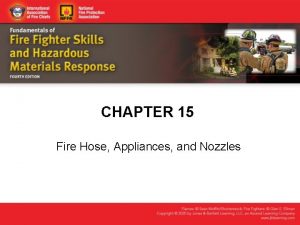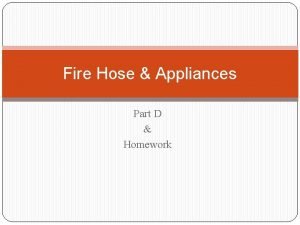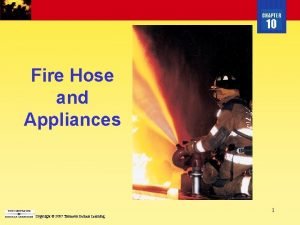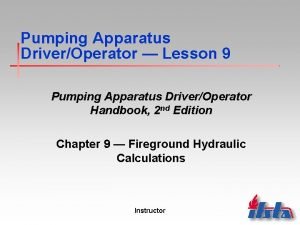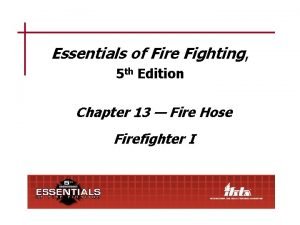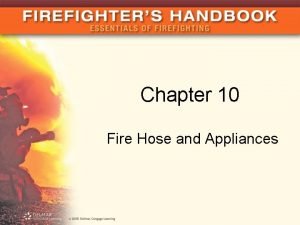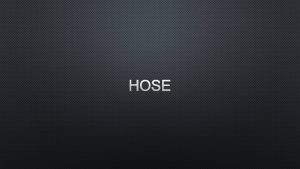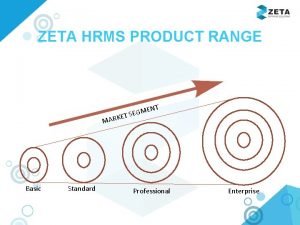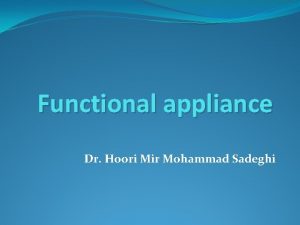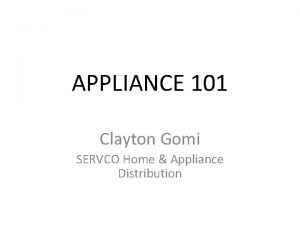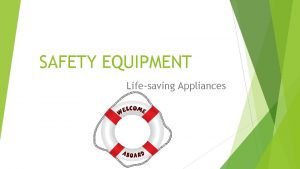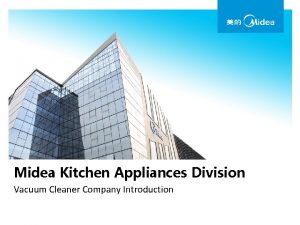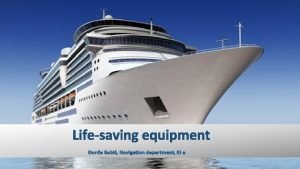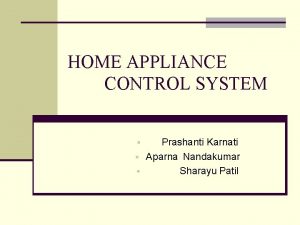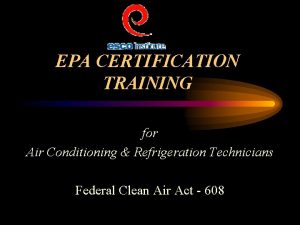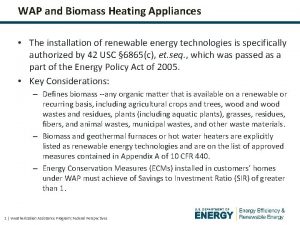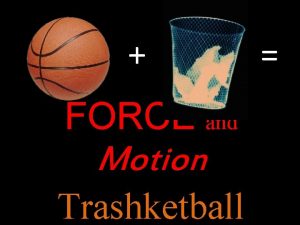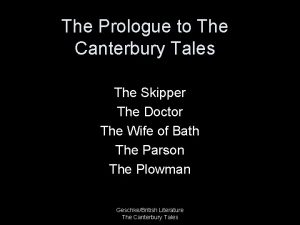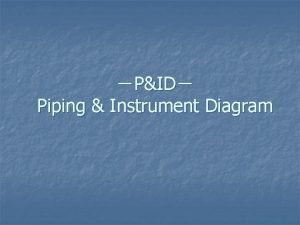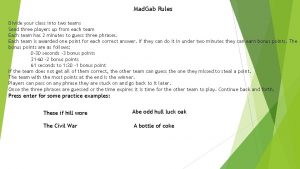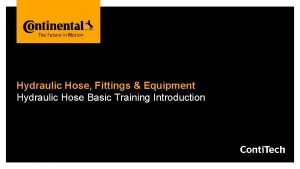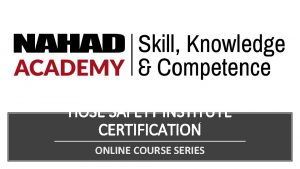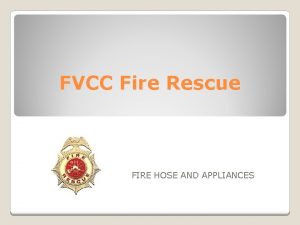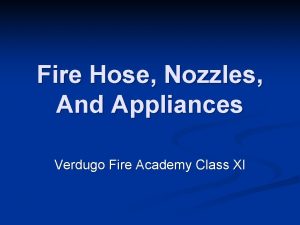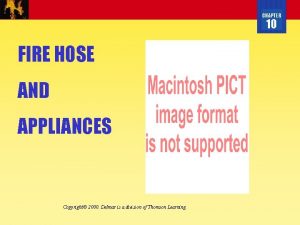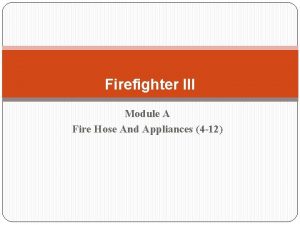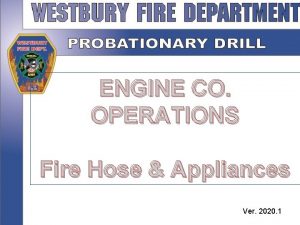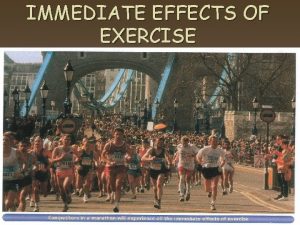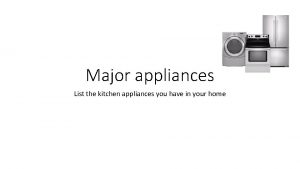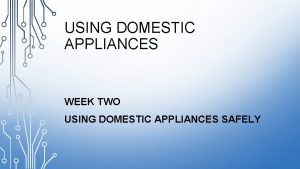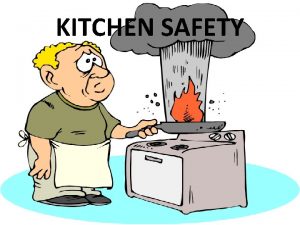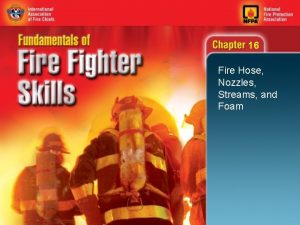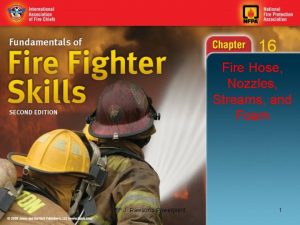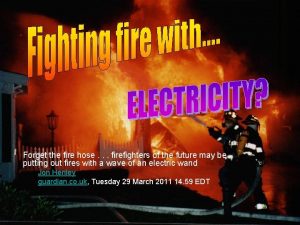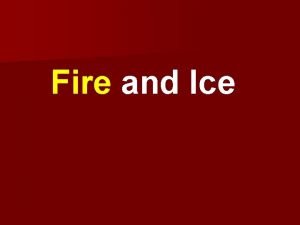CHAPTER 10 Fire Hose and Appliances 1 Copyright





































- Slides: 37

CHAPTER 10 Fire Hose and Appliances 1 Copyright © 2007 Thomson Delmar Learning

CHAPTER 10 Objectives (1 of 4) • Identify and explain the construction of fire hose. • Demonstrate the care and maintenance of fire hose. • Identify the types of hose couplings and threads. • Demonstrate the care and maintenance of hose couplings. 2 Copyright © 2007 Thomson Delmar Learning

CHAPTER 10 Objectives (2 of 4) • Identify and explain the use of hose tools and appliances. • Demonstrate the coupling and uncoupling of fire hose. • Demonstrate the rolling, carrying, and loading of fire hose. • Demonstrate the advancing of fire hose lines, both charged and uncharged. 3 Copyright © 2007 Thomson Delmar Learning

CHAPTER 10 Objectives (3 of 4) • Demonstrate the establishment of a water supply connection. • Demonstrate the extending of hose lines. • Demonstrate the replacement of burst hose sections. • Demonstrate the procedures for laying hose lines for water supply. 4 Copyright © 2007 Thomson Delmar Learning

CHAPTER 10 Objectives (4 of 4) • Demonstrate the deployment of master stream devices. • Demonstrate the service testing of hose. 5 Copyright © 2007 Thomson Delmar Learning

CHAPTER 10 Introduction (1 of 2) • Hose is the tool used to move water. • Firefighters must know how to store hose on the apparatus and how to deploy it. • Fire hose is a flexible conduit used to move water, or other agent, from a source to the fire. • Couplings, adapters, and appliances are used to connect hose. 6 Copyright © 2007 Thomson Delmar Learning

CHAPTER 10 Introduction (2 of 2) • Today, many departments use National Standard Hose Threads. • Other departments use adapters to make connections to standard threaded couplings. • Adapters and appliances have been created or made lighter to make firefighting easier. 7 Copyright © 2007 Thomson Delmar Learning

CHAPTER 10 Hose Tools and Appliances • Hose tools help move or operate hose lines. • Appliances are devices that water flows through, including adapters and connectors. • Tools include rope hose tools, wrenches, rollers, hose clamps, and other items. • Various types of valves are also used to control water flow and distribution. 8 Copyright © 2007 Thomson Delmar Learning

CHAPTER Tools and Appliances • • • Rope hose tool Spanner wrench Hydrant wrench Hose roller Hose clamp Hose jacket Hose bridge Hose cart Double couplings • • • 10 Increaser/reducer Gate valve Intake relief valve Wye Siamese Hydrant valve Strainer Distributor pipe Hose cap 9 Copyright © 2007 Thomson Delmar Learning

CHAPTER 10 Hose Tools 10 Copyright © 2007 Thomson Delmar Learning

CHAPTER Hose Appliances 10 11 Copyright © 2007 Thomson Delmar Learning

CHAPTER 10 Coupling and Uncoupling Hose • Coupling – Foot-tilt – Over-the-hip – Two-person method • Uncoupling – Spanner wenches – Knee-press – Stiff-arm 12 Copyright © 2007 Thomson Delmar Learning

CHAPTER Coupling 10 13 Copyright © 2007 Thomson Delmar Learning

CHAPTER Uncoupling 10 14 Copyright © 2007 Thomson Delmar Learning

CHAPTER 10 Hose Rolls • Roll hose storage or to have it ready for use. • Several options – Straight/storage hose roll – Single-donut roll – Twin or double-donut roll 15 Copyright © 2007 Thomson Delmar Learning

CHAPTER 10 Donut Rolls 16 Copyright © 2007 Thomson Delmar Learning

CHAPTER 10 Hose Carries (1 of 2) • Drain and carry method • Shoulder loop carry • Hose/street drag 17 Copyright © 2007 Thomson Delmar Learning

CHAPTER 10 Hose Carries (2 of 2) 18 Copyright © 2007 Thomson Delmar Learning

CHAPTER 10 Hose Loads (1 of 3) • • • Dutchman Accordion Flat load Horseshoe load Straight finish load • • Reverse horseshoe Minuteman Triple-layer Modified Gasner bar pack 19 Copyright © 2007 Thomson Delmar Learning

CHAPTER 10 Hose Loads (2 of 3) 20 Copyright © 2007 Thomson Delmar Learning

CHAPTER Hose Loads (3 of 3) 10 21 Copyright © 2007 Thomson Delmar Learning

CHAPTER 10 Advancing Hoselines • • Into structures Up and down stairs Using a standpipe system Working hose off a ladder 22 Copyright © 2007 Thomson Delmar Learning

CHAPTER Establishing a Water Supply Line 10 • Several methods exist for establishing a water supply depending on: – Type of water source – Hydrant style – Hose lays used – Pumper use at water source 23 Copyright © 2007 Thomson Delmar Learning

CHAPTER 10 Extending Hoselines (1 of 2) • Firefighters should be familiar with techniques used to extend hose lines. • The preferred method is the use of a break -apart nozzle. • The other method is the use of a hose clamp. – Use the clamp carefully and cautiously. 24 Copyright © 2007 Thomson Delmar Learning

CHAPTER 10 Extending Hoselines (2 of 2) 25 Copyright © 2007 Thomson Delmar Learning

CHAPTER Replacing Sections of Burst Line 10 • Bursting of a hose section is very dangerous. – It can cause personal injury and additional property damage. • Hose line must be shut down to remove the section replaced. 26 Copyright © 2007 Thomson Delmar Learning

CHAPTER 10 Hose Lay Procedures • Supply lines and the hose beds on apparatus are designed to use one of three lays. – Forward lay – Reverse lay – Split lay 27 Copyright © 2007 Thomson Delmar Learning

CHAPTER 10 Forward Lay 28 Copyright © 2007 Thomson Delmar Learning

CHAPTER 10 Reverse Lay 29 Copyright © 2007 Thomson Delmar Learning

CHAPTER 10 Split Lay 30 Copyright © 2007 Thomson Delmar Learning

CHAPTER Deploying Master Stream Devices (1 of 6) 10 • Water applicators are capable of flowing over 350 gallons of water per minute. • A wagon pipe is a permanently mounted stream device. • A deluge set is not permanently mounted. • A monitor type device is a permanently mounted master stream device with a prepiped waterway on an aerial ladder or platform. 31 Copyright © 2007 Thomson Delmar Learning

CHAPTER Deploying Master Stream Devices (2 of 6) 10 • A ladder pipe is a non-permanently mounted device needing a hose line. • Master stream devices are rigged and then charged. • For every foot of vertical reach needed, the device is moved one foot away. (solid stream tip) 32 Copyright © 2007 Thomson Delmar Learning

CHAPTER Deploying Master Stream Devices (3 of 6) 10 • For horizontal reach, each pound of pressure equals 1 foot of reach. – Maximum reach is usually 3 floors. • A wagon pipe is a permanently mounted device. • The monitor pipe has a direct discharge. • Deluge set on top of an engine may be prepiped. 33 Copyright © 2007 Thomson Delmar Learning

CHAPTER Deploying Master Stream Devices (4 of 6) 10 • When using a deluge on the ground, intakes should be facing the fire building. • A ladder pipe needs a hose line for rigging it up a ladder and another for supply. 34 Copyright © 2007 Thomson Delmar Learning

CHAPTER Deploying Master Stream Devices (5 of 6) 10 35 Copyright © 2007 Thomson Delmar Learning

CHAPTER Deploying Master Stream Devices (6 of 6) 10 36 Copyright © 2007 Thomson Delmar Learning

CHAPTER 10 Summary • Fire hose, adapters, and appliances allow firefighters to move water. • It is important to know how to use the various appliances and tools. • Appliances and tools provide firefighters greater abilities to facilitate fire suppression. • Proper techniques of connecting, advancing, and operating tools must be understood. 37 Copyright © 2007 Thomson Delmar Learning
 Which coupling goes on the inside of a straight hose roll?
Which coupling goes on the inside of a straight hose roll? 3 inch fire hose
3 inch fire hose Fire hose loads
Fire hose loads Friction loss hand method
Friction loss hand method Which hose roll leaves only one coupling exposed
Which hose roll leaves only one coupling exposed Types of hose folding
Types of hose folding Nfpa 1961 standard on fire hose
Nfpa 1961 standard on fire hose Fire hose reel signage standards
Fire hose reel signage standards Kitchen appliances images
Kitchen appliances images Reichstag fire who was the fire starter
Reichstag fire who was the fire starter Fire damper connection to fire alarm
Fire damper connection to fire alarm A-e rwi
A-e rwi Extinguisher parts
Extinguisher parts Component of adam clasp
Component of adam clasp Passive tooth borne appliances
Passive tooth borne appliances Ao appliances online
Ao appliances online Amann appliances
Amann appliances Graduated commision
Graduated commision Zeta hrms kcm appliances
Zeta hrms kcm appliances Selecting major appliances
Selecting major appliances Lifting tools and tackles pdf
Lifting tools and tackles pdf Passive tooth borne appliances
Passive tooth borne appliances Servco home and appliance
Servco home and appliance Lifesaving appliances
Lifesaving appliances Alone db
Alone db Home appliances
Home appliances Midea kitchen appliances
Midea kitchen appliances Life saving appliances
Life saving appliances Aparna home appliances
Aparna home appliances System dependent recovery equipment cannot be used when
System dependent recovery equipment cannot be used when System dependent recovery equipment cannot be used when
System dependent recovery equipment cannot be used when Wap appliances
Wap appliances A fireman turns on his hose and is knocked backwards.
A fireman turns on his hose and is knocked backwards. Skipper plowman
Skipper plowman P&id
P&id Thread why tanned blew gibberish
Thread why tanned blew gibberish Industrial hose training
Industrial hose training Hose safety institute
Hose safety institute
